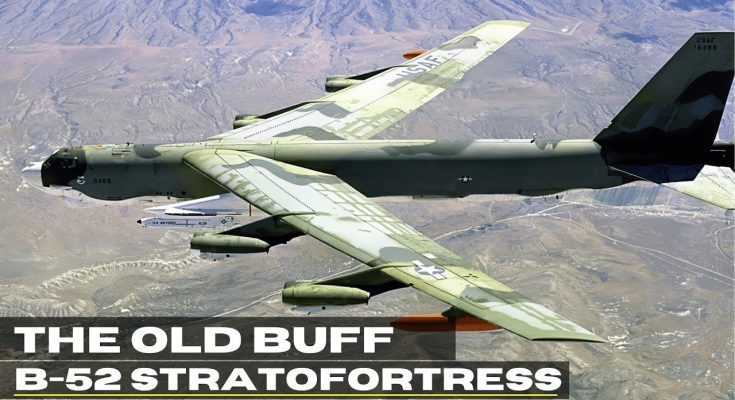Why the Age Doesn’t Matter for the B-52 Stratofortress
The B-52 Stratofortress is one of the most iconic and enduring aircraft in the history of military aviation. Despite being introduced in 1955, the B-52 has remained a vital part of the U.S. Air Force’s strategic bomber fleet for nearly seven decades. What makes the B-52 remarkable is not just its longevity, but its ability to adapt and evolve alongside advancements in aviation technology. This adaptability is why the age of the B-52 doesn’t matter in terms of its continued effectiveness in modern warfare.
A Legendary Design Built to Last
The B-52’s design, while dating back to the 1950s, was ahead of its time in terms of capability and durability. Built for long-range strategic bombing, the B-52 has always been a versatile platform capable of carrying a wide array of weapons, from nuclear bombs to precision-guided munitions. Its eight-engine configuration and high-mounted wings make it highly stable during flight and able to operate efficiently over long distances, even in harsh conditions.
The aircraft was engineered to be easily maintained and upgraded over time, with modular systems and reinforced components that allow for extended service life. The B-52 was designed with the understanding that it would require ongoing updates to stay relevant as technology advanced, and this foresight has allowed it to remain operational for decades.
Upgrades Keep the B-52 Competitive
While the B-52’s basic design has remained largely unchanged, continuous upgrades have kept it at the forefront of modern combat. Over the years, the aircraft has undergone multiple overhauls and technological upgrades that have enhanced its systems, including avionics, weapons capabilities, and engines. The B-52H variant, the most recent model in service, has received numerous improvements to ensure it remains an effective tool for global strike missions.
For example, the B-52 has been fitted with new digital avionics, improved navigation systems, and advanced communications equipment to ensure compatibility with modern military operations. These upgrades have ensured that the B-52 can integrate with more modern aircraft and participate in joint operations with other branches of the military.
In addition, the aircraft’s engine upgrade program, which includes the replacement of its old engines with more fuel-efficient models, is extending the B-52’s operational life well into the 2050s. These upgrades not only enhance performance but also improve fuel economy, making the B-52 more cost-effective and capable of carrying out extended missions.
Adaptability: A Multirole Bomber
Another reason age is irrelevant for the B-52 is its multirole capabilities. Originally designed as a nuclear bomber during the Cold War, the B-52 has evolved into a highly effective conventional bomber capable of performing a wide range of tasks, including close air support, intelligence gathering, and precision strike missions. The B-52 can carry a variety of weapons, such as JDAMs, cruise missiles, and smart bombs, making it adaptable to a range of modern combat scenarios.
The aircraft’s ability to operate in various mission sets, combined with its global reach and long-range capabilities, ensures that the B-52 remains relevant even as newer bombers, like the B-2 Spirit and B-21 Raider, enter service. Its continued relevance in counterterrorism and conventional warfare further underscores its value to the U.S. Air Force.
A Symbol of American Air Power
The B-52 Stratofortress is more than just an aircraft—it is a symbol of American resilience and strategic flexibility. Its continued service, despite its age, demonstrates the Air Force’s ability to maintain and enhance legacy platforms to meet evolving threats. The B-52’s combination of reliability, multirole capability, and continuous modernization ensures that it will remain a cornerstone of U.S. air power for years to come, proving that age is just a number when an aircraft is built to last.



